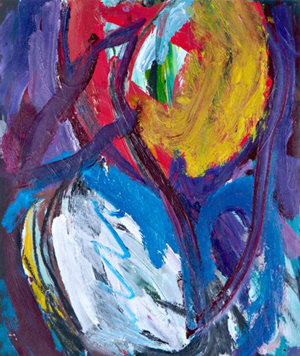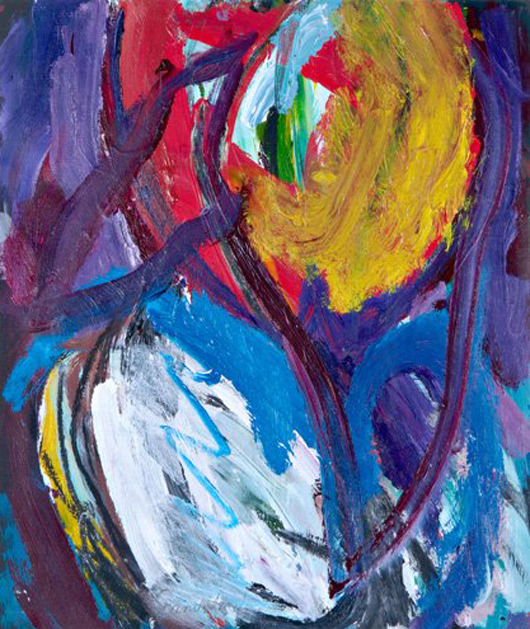
NORRISTOWN, Pa. (AP) – You might think that, waiting in a hallway for a family member to get out of surgery, or staring at the walls from your hospital bed, you’d welcome some interesting, engagingly diversionary artwork.
Daniel Day, director of Health Environment Art Services, is here to tell you that you would not.
Day, who has spent the better part of two years selecting art for the new Einstein Medical Center Montgomery, which opens Saturday in East Norriton, says research, like his instincts, is clear.
“Views of nature are much more preferred than abstract and contemporary art,” he says. “When you’re in a high-stress situation, you want something familiar, not challenging, not agitating.”
It also matters where art is placed in a hospital. As Day likes to say, “You don’t realize how important that is until you put the waterfall picture in the ultrasound unit,” where bladders are full.
At Einstein Montgomery, the biggest landscape of all is the one visible across Germantown Pike from the hospital: the bucolic view of Norristown Farm Park, with its iconic barn in a field.
The hospital has a glass wall that angles out facing the field, which gives hallways, foyers, and those patients lucky enough to have rooms on the Germantown Pike side as soothing a vista as can be envisioned. Much of the art throughout the building echoes that pastoral scene.
Day, who has spent two decades selecting art for hospitals all over the country, said the Einstein directors were clear: They wanted the artwork to reflect the community’s demographics, values, geography, and in selected areas, its artists.
Moving out of Norristown – the hospital will replace Montgomery Hospital, which closes simultaneously – and into the younger, more-affluent exurbia of East Norriton, Einstein knew what it didn’t want on its walls: urban scenes, harsh colors, and, with a few exceptions, art depicting people.
“The hospital wants people to feel comfortable in the setting,” Day said. “If the work reflects the community, it sends a comforting message. It’s the vision this community has of itself. It sends the message, ‘We know who you are.’”
At the Atlanticare Medical Center in Atlantic City, that means beach, ocean, boats and photographs of Jersey Shore lifeguard races by Rusty Silverman (message: We’re here to rescue you!).
In East Norriton, that means, in large part, barns, wildlife, streams, nature, and, frankly, more barns – photographs and paintings, with local artists chosen competitively.
“They wanted to not bring the city in here,” said Day’s partner, Annette Eisenman. “It doesn’t serve the city.”
Day led a recent art tour of the hospital and discussed the psychological and aesthetic concerns that informed his choice of art (within Einstein’s budget, a figure the hospital declined to disclose).
When he began in his field, Day said, he went into hospital boardrooms to speak about the healing power of art, and people viewed him skeptically, as if they expected him to bring out “the crystals and candles.” Now, research has caught up with what he believed then.
He tells hospitals that patients who have had a view of a nature image as opposed to a brick wall recorded earlier discharges and fewer requests for pain medication. “I use that on CEOs when they say, ‘How can it save me money?’”
Coming from Houston, he was relieved to be in a place where four seasons could be depicted, but acknowledged, “It’s really hard to find positive winter scenes.”
The hospital wanted to involve the community, so Day put out a call for art. In the end, works from 16 artists were selected, including from Mamacita, which is a mothers’ cooperative of 11 artists who contributed 44 smaller works to a single large piece now located outside the labor-and-delivery waiting area.
Their original art fills a gallery along the hallway that leads from the hospital to the Medical Arts Building. The titles of the works – Plymouth Township Park at Twilight by John Bandish, Shield From the Wind by Michelle Billetta, for example – give a sense of what Day was after: softer colors, tranquil themes.
Paul Meyer, executive director of the Morris Arboretum of the University of Pennsylvania, has four photographs on canvas of scenes from the arboretum, and three from the Wissahickon Valley.
One prominently displayed artist is Merle Spandorfer, 77, of Cheltenham, whose work is in the Philadelphia Museum of Art. Her uplifting 30-by-45-inch Orange Glow was inspired in part by her experience as a breast-cancer patient treated by an Einstein doctor.
In general, Day shies away from red for obvious reasons (blood), but he made an exception for a piece depicting Elfreth’s Alley (the only city image, though a benignly historic one) in bold redbrick. It’s the last piece in the hallway gallery, placed there in part as a signpost (to get to the hospital from the Medical Arts Building, go to the painting of the red Elfreth’s Alley building, etc., etc.).
In individual hospital rooms, the art – generally from catalogs – tends toward photos of trees, flowers, birds and pastoral architecture (i.e., barns). But in the cafeteria, a piece with a barn in the middle is bordered by more abstract images, providing a bit of a break for those who might feel oversoothed.
In general, subject matter is a sensitive issue.
“Showing people art in a hospital can be very sensitive,” Day said. “The goal of art is to portray a scene you can put yourself in. The view stops being healing and starts being storytelling. If you have a person with their back to you walking toward trees, my immediate thinking is, Where are they running to? It doesn’t allow you to put yourself in the image.
“Art with a person in it is putting another person in your private moment. Mom’s never going to go on a picnic.”
People in hospitals tend to remember what they were looking at during their stay. “Our memory hormones are on overdrive,” Day said. “When you’re in the ER and get bad news, you want the artwork to be a positive distraction. You want it to be a beautiful picture of a pathway through the trees. You don’t want the artwork to be intrusive, to be aggressive. That will be the artwork that etches into the memory bank when they get the bad news about Mom.”
For a similar reason, there are no photos of families or mothers with babies in the labor-and-delivery area. “Not everyone walks out with the baby they had planned for, and the last thing they want to look at is an idealized representation of that.”
Day favors artwork of pathways in the cardiac-related areas. “Pathways are very restorative and healing,” he said. “They’ll say, ‘Get up, get up.’”
Even though a person’s personal art preference might tend toward more abstract or challenging works, in doesn’t carry over to a medical context. Annette Eisenman said she experienced that personally in a doctor’s office.
“I was waiting for test results in an area full of abstract art,” she said. “I had to shut my eyes, it was so agitating.”
___
Online:
http://bit.ly/Vghk2N
___
Information from: The Philadelphia Inquirer, http://www.philly.com
Copyright 2012 Associated Press. All rights reserved. This material may not be published, broadcast, rewritten, or redistributed.
AP-WF-10-03-12 1526GMT
ADDITIONAL IMAGE OF NOTE



